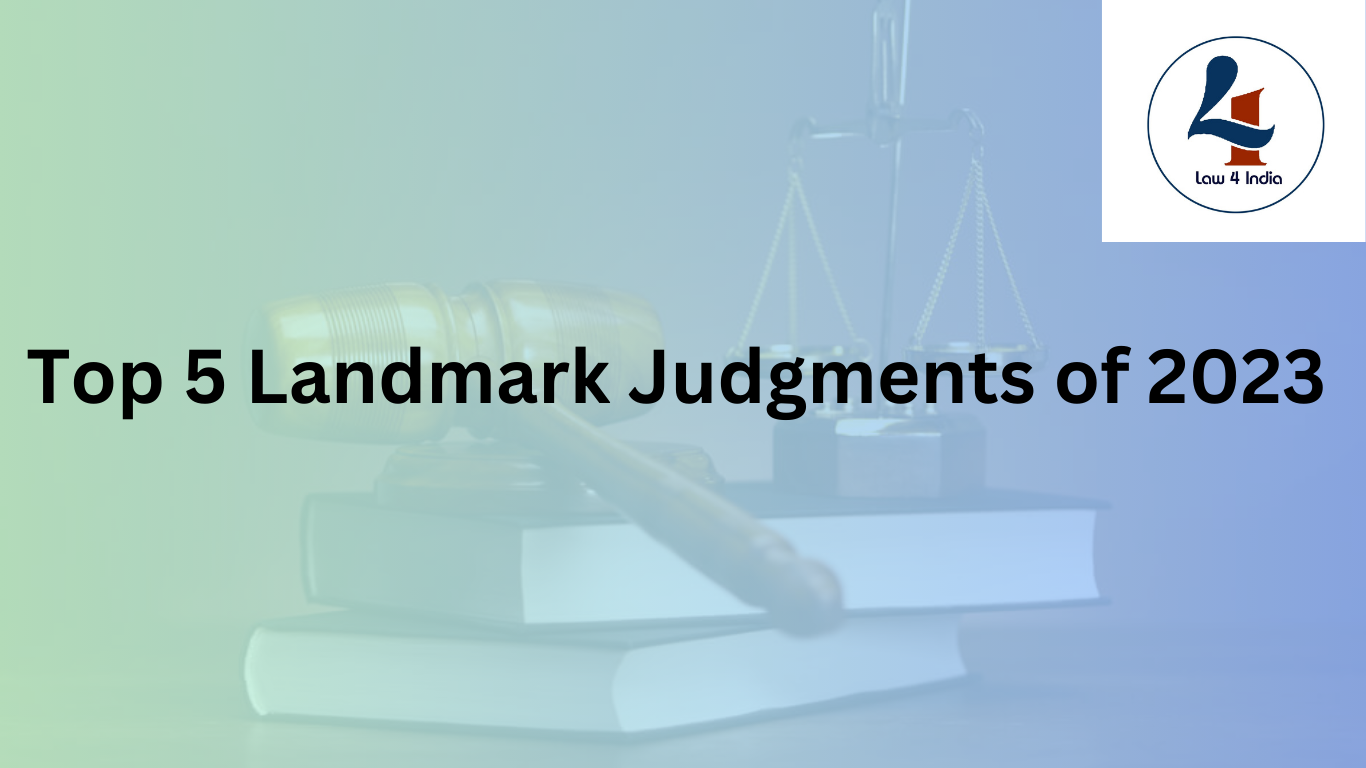Shankari Prasad Vs. UOI: A Landmark Case in Indian Constitutional History
Background
The case emerged in the context of the First Constitutional Amendment Act, 1951, which sought to modify certain rights to facilitate land reforms and the abolition of zamindari. Shankari Prasad, the petitioner made the argument that this amendment violates the fundamental rights, specifically the right to property under Articles 19(1)(f) and 31. The main contention was that fundamental rights should be beyond the reach of Parliament’s amending powers.
The Indian government implemented a number of agrarian reforms and reservations in the various states after independence in an effort to foster socioeconomic development. Land redistribution programs for various landlord types were the main focus of the reforms. These agrarian reforms were promptly contested in all of the nation’s High Courts on the grounds that they infringed upon the right to property, which was then a fundamental right.
With an ardent desire to promote and validate agrarian reforms the parliament, in a rather attempt to repeal the Patna High Court judgment, introduced the first Constitutional Amendment just 14 months after the constitution’s original promulgation. Under the first amendment, Article 31-A and Article 31B were inserted respectively. And as a consequence of that this Supreme Court validated the agrarian reforms.
Key Issue
The crucial question was whether the power granted to Parliament under Article 368 allowed for amendments that could alter or even nullify fundamental rights. Additionally, the petitioner argued that such amendments would be invalid under Article 13, which prohibits laws that infringe the fundamental rights.
The main issues in this case focused on the power of Parliament to amend the Constitution and the permission to amend fundamental rights. The question raised in this case was whether Parliament has the power to amend the fundamental rights of the Constitution and whether the 1st Constitution Amendment Act, 1951 is valid? Furthermore, the main issue was whether ‘Law’ under Article 13(3) includes judicial review of Constitutional Amendment? The Supreme Court considered these issues and in its decision recognized the Constitution amending power of the Parliament.
Judgment
The Supreme Court decided in favour of the Union of India, holding that Parliament’s power under Article 368 extended to amending all parts of the Constitution, including fundamental rights. The Court clarified that the term “law” in Article 13 did not encompass constitutional amendments. As a result, amendments impacting fundamental rights could not be invalidated on the basis of Article 13 of the Constitution of India.
It was ruled that Parliament has absolute power to amend the Constitution, including the fundamental rights. The Court said that under Article 368, Parliament has the power to amend the Constitution, and fundamental rights can also be amended. This decision established the supremacy of Parliament in constitutional amendment and had a significant impact on the interpretation of fundamental rights.
Impact
The Shankari Prasad case played a pivotal role in shaping Indian constitutional law. By upholding Parliament’s broad amending power, it influenced the evolving dynamics between legislative authority and the safeguarding of citizens’ rights, shaping India’s constitutional framework for decades to come.
This judgment established that Parliament had the authority to amend any part of the Constitution, including those affecting fundamental rights. It set a precedent for subsequent leading cases such as Golak Nath and Kesavananda Bharati, where the scope of amending power was further debated. Shankari Prasad v. Union of India remains significant as it laid the groundwork for understanding the balance between legislative power and the protection of fundamental rights in India.
Conclusion:
The decision in the case of Shankari Prasad vs. Union of India (1951) is an important milestone in the history of the Indian Constitution. In this case, the Supreme Court considered a petition challenging the validity of the Constitution Amendment Act, 1951. The petitioner argued that the Constitution Amendment Act violates fundamental rights and is outside the powers of Parliament.
The Supreme Court ruled by a majority of 5:1 that the Constitution Amendment Act was valid. The Court said that under Article 368 of the Constitution, Parliament has the power to amend the Constitution, which also includes fundamental rights. Thus, the Court recognized the powers of the Parliament and established a balance with the fundamental rights.
As a result of this decision, the process of constitutional amendment was clarified and the limits of the powers of Parliament were determined. This decision is an important milestone in the development of the Indian Constitution and had a significant impact on subsequent cases.






